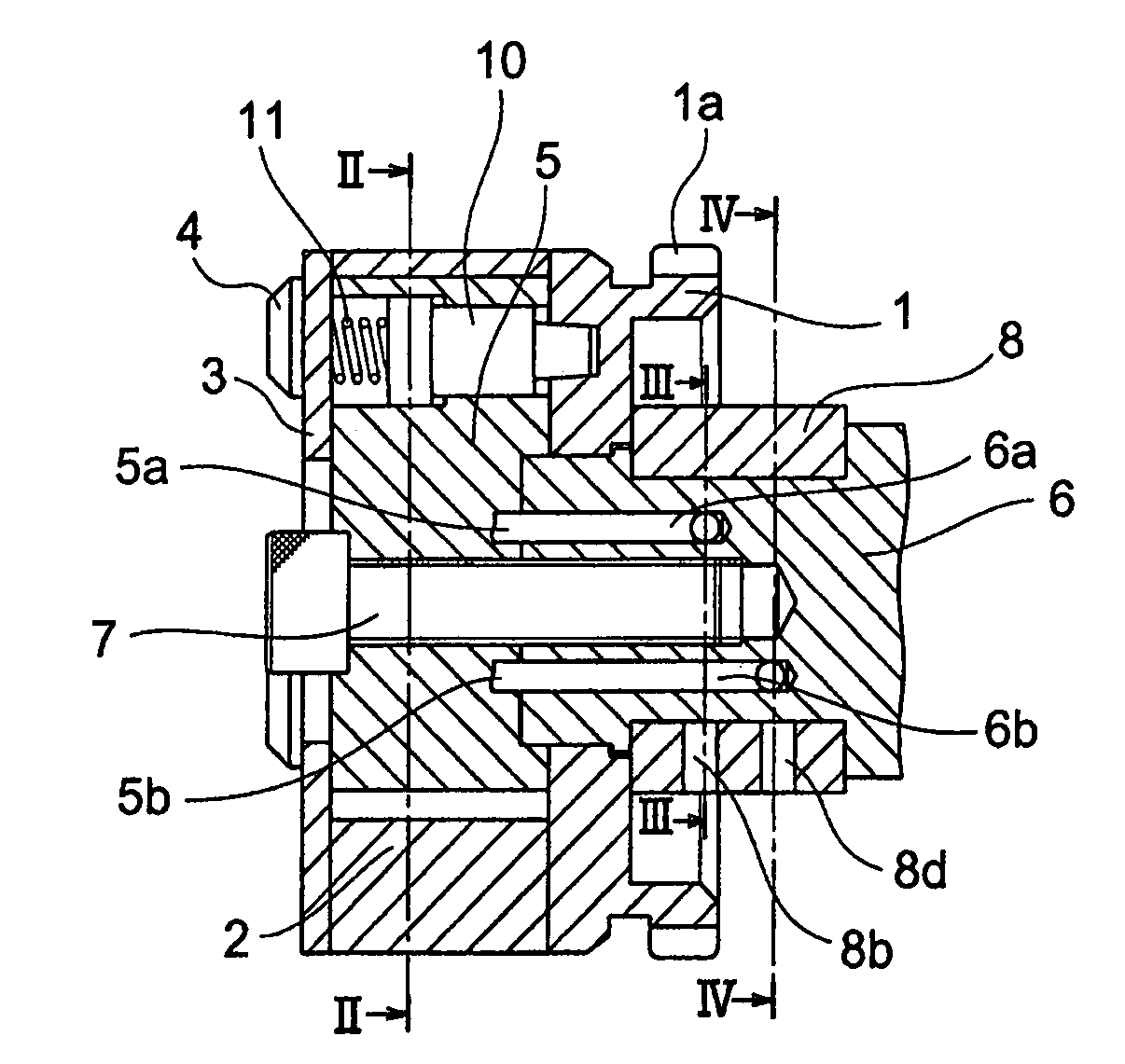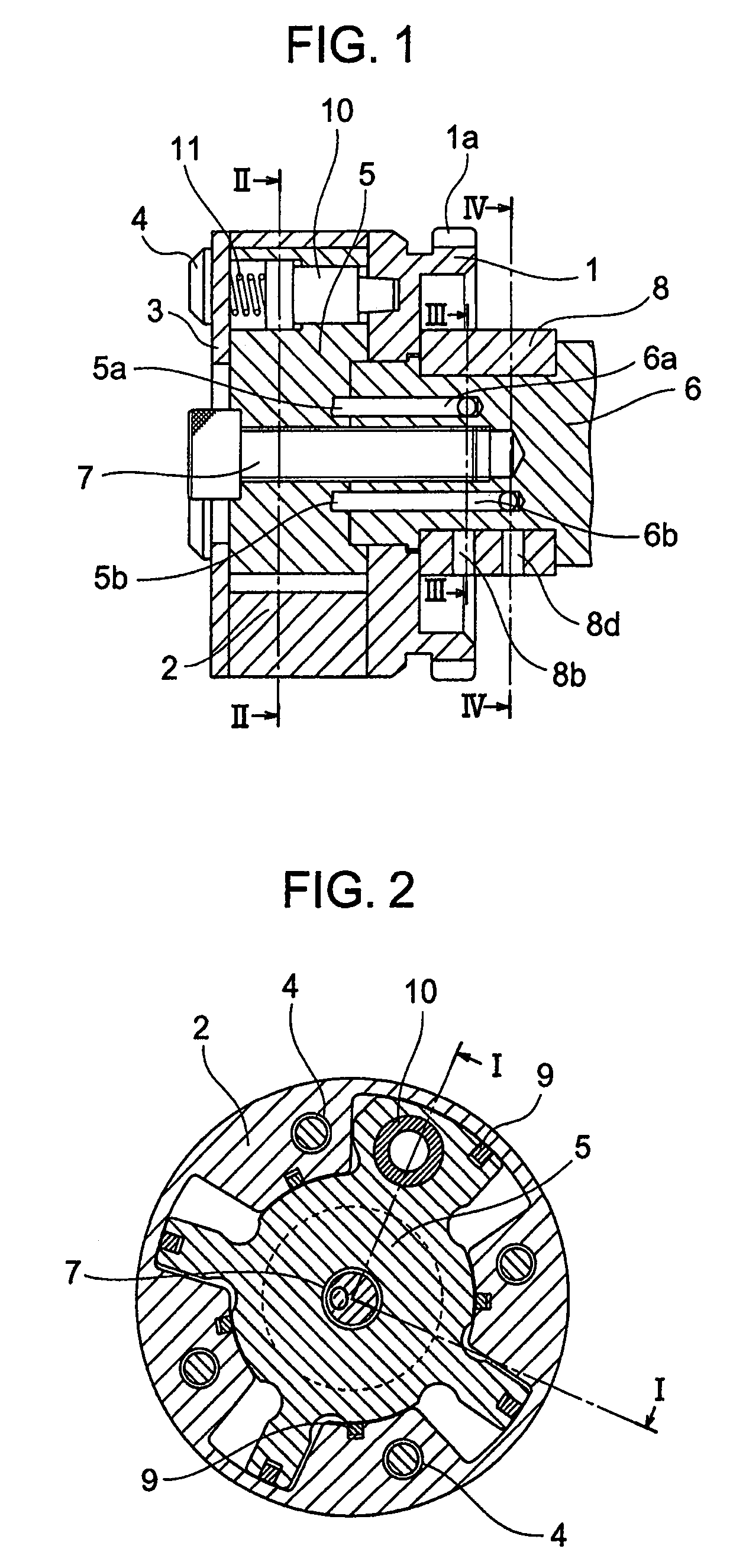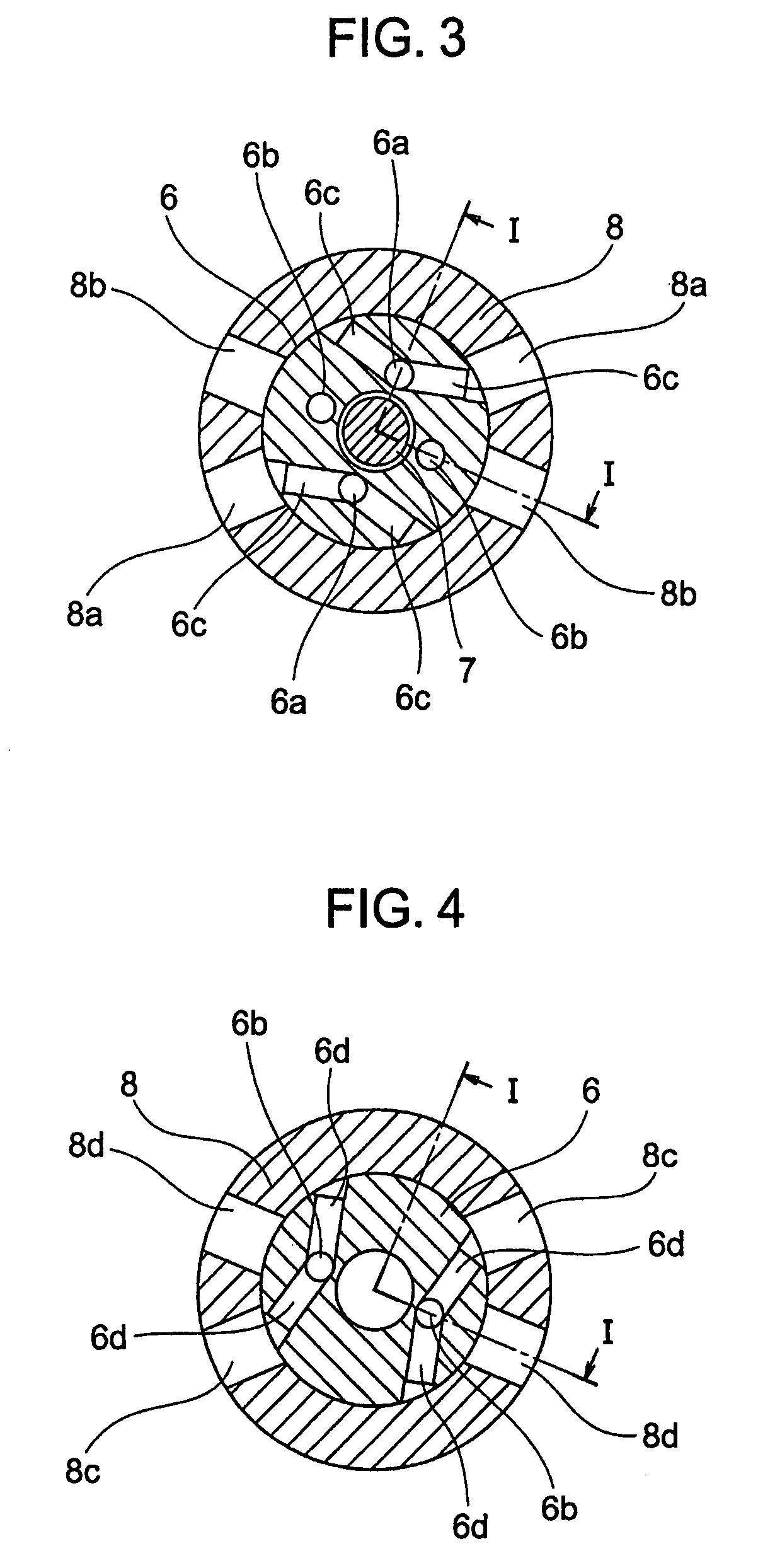Phase adjusting apparatus and a cam shaft phase adjusting apparatus for an internal combustion engine
- Summary
- Abstract
- Description
- Claims
- Application Information
AI Technical Summary
Benefits of technology
Problems solved by technology
Method used
Image
Examples
first embodiment
[0073]Consequently, the cam shaft phase adjusting apparatus is driven by hydraulic pressure and fluctuating torque in the direction of advanced angle and reverse rotation can be prevented in a state, in which the electromagnetic valve 12 is controlled in the advanced angle mode as shown in FIGS. 5 and 6, so that phase shift can be achieved at high speed in the direction of advanced angle.
[0074]FIGS. 7 and 8 show a state, in which the retarded angle occasion oil supply paths 8d and the retarded angle occasion oil drain paths 8b in FIGS. 3 and 4 are communicated to the hydraulic power source communication path 13b and the drain communication path 13a, respectively, by the electromagnetic valve 12. With the electromagnetic valve 12, the spool 12b axially driven by the solenoid 12c moves rightward in the drawings to be positioned relative to the body 12a to provide communication between the hydraulic power source communication path 13b and a retarded angle occasion oil supply communica...
second embodiment
[0087]Subsequently, a cam shaft phase adjusting apparatus for internal combustion engine, according to the invention, will be described citing a fundamental function, a configuration example, and a control example of the cam shaft phase adjusting apparatus.
[0088]FIG. 15 is a view illustrating the fundamental function of a cam shaft phase adjusting apparatus according to a second embodiment of the invention. FIG. 16 is a side, cross sectional view showing a cam shaft phase adjusting apparatus for internal combustion engines according to a second embodiment of the invention and taken along the line XVI-XVI in FIG. 17. FIG. 17 is a cross sectional view showing the cam shaft phase adjusting apparatus according to the second embodiment and taken along the line XVII-XVII in FIG. 16. FIG. 18 is a cross sectional view showing hydraulic pressure paths to advanced angle hydraulic chambers in the cam shaft phase adjusting apparatus according to the second embodiment and taken along the line XV...
third embodiment
[0107]Subsequently, a drive system, in which the cam shaft is driven in an advanced angle mode (control), a retarded angle mode (control), or a stationary mode (control to fix to a predetermined phase without being moved by the fluctuating torque) with the use of a configuration of oil path communication shown in FIG. 23, will be described with reference to FIG. 24.
[0108]Cam shaft driving according to the third embodiment is a system, in which a driving force is used properly at low speed (low hydraulic pressure) and at high speed (high hydraulic pressure) such that the fluctuating torque is used as a driving force at low speed and hydraulic pressure is used as a driving force at high speed. In order to properly use a driving force, two control valves having different configurations of oil path communication are used such that one of the control valves is used at low speed and the other of the control valves is used at high speed and that when one of the control valves is used, mut...
PUM
 Login to View More
Login to View More Abstract
Description
Claims
Application Information
 Login to View More
Login to View More - R&D
- Intellectual Property
- Life Sciences
- Materials
- Tech Scout
- Unparalleled Data Quality
- Higher Quality Content
- 60% Fewer Hallucinations
Browse by: Latest US Patents, China's latest patents, Technical Efficacy Thesaurus, Application Domain, Technology Topic, Popular Technical Reports.
© 2025 PatSnap. All rights reserved.Legal|Privacy policy|Modern Slavery Act Transparency Statement|Sitemap|About US| Contact US: help@patsnap.com



